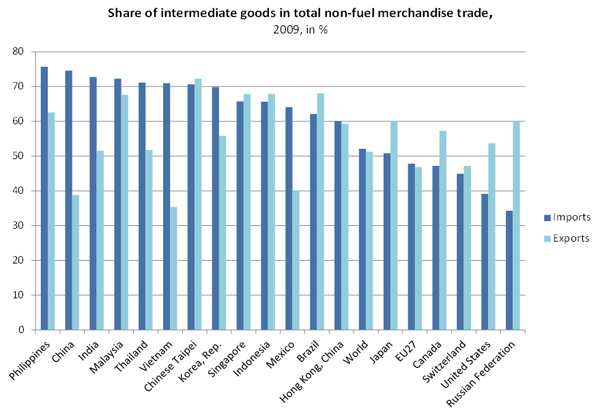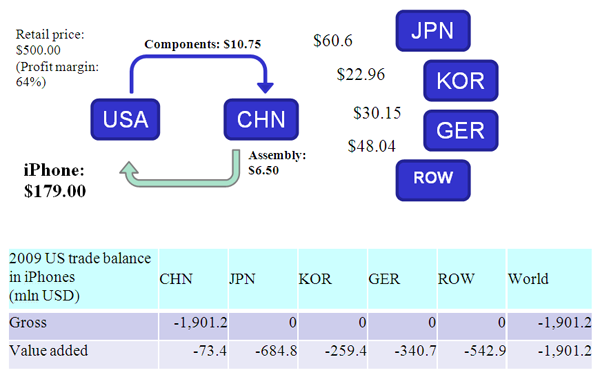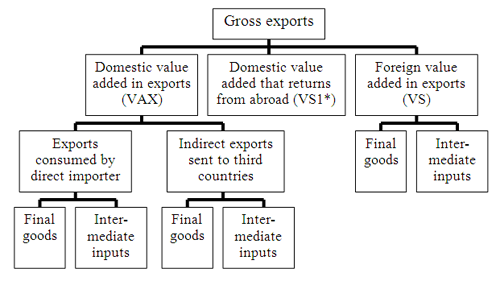
Global Forum on Trade Statistics
With the increasing globalisation of production processes, there is a growing awareness that conventional trade statistics may give a misleading perspective of the importance of trade for economic growth and income. This reflects the fact that trade flows are measured in gross terms. The development of trade in value-added is meant to create new metrics of international trade that better reflect the contribution of trade to economic growth (value-added) and also employment. For example, an exported good may require significant intermediate inputs from domestic manufacturers, who, in turn, require significant intermediate imports, and, so, much of the revenue from selling the exported good may accrue abroad to reflect purchases of intermediate imports used in production, leaving only marginal benefits in the exporting economy.
Trade in Value-Added
Trade in Value-Added: I-O approach and the domestic content of exports
Regional networks in supply chains in Asia show a change from trade in goods to trade in tasks. The following graph illustrates how mostly developing (Asian) countries import mainly intermediate goods, which is then used in the processing of final goods. It is shown further that the industries of some developing countries constitute an intermediate step in the production process, like Malaysia, Singapore and Indonesia, where intermediate goods are both imported and exported at a very high rate.

OECD and IDE-JETRO jointly made a presentation on measuring trade in value-added using input-output tables. A new perspective on trade can change the way we deal with issues like trade imbalances by reallocating bilateral trade deficits and surplus across partner countries; also for trade and employment we would better understand where jobs are created and lost in global value chains, and for trade and environment we would more clearly know the impact of trade on greenhouse gas emissions. As an illustration of the break down of value-added in the production of the iPhone, the picture below shows the change in the trade balance between US and China if re-calculated on the basis of trade in value-added.

USITC presented its research on decomposing exports into domestic and foreign value-added and into intermediate and final goods, see below. The empirical results show regional differences in supply chain participation; for instance, East Asia has the most foreign content in its own exports.


